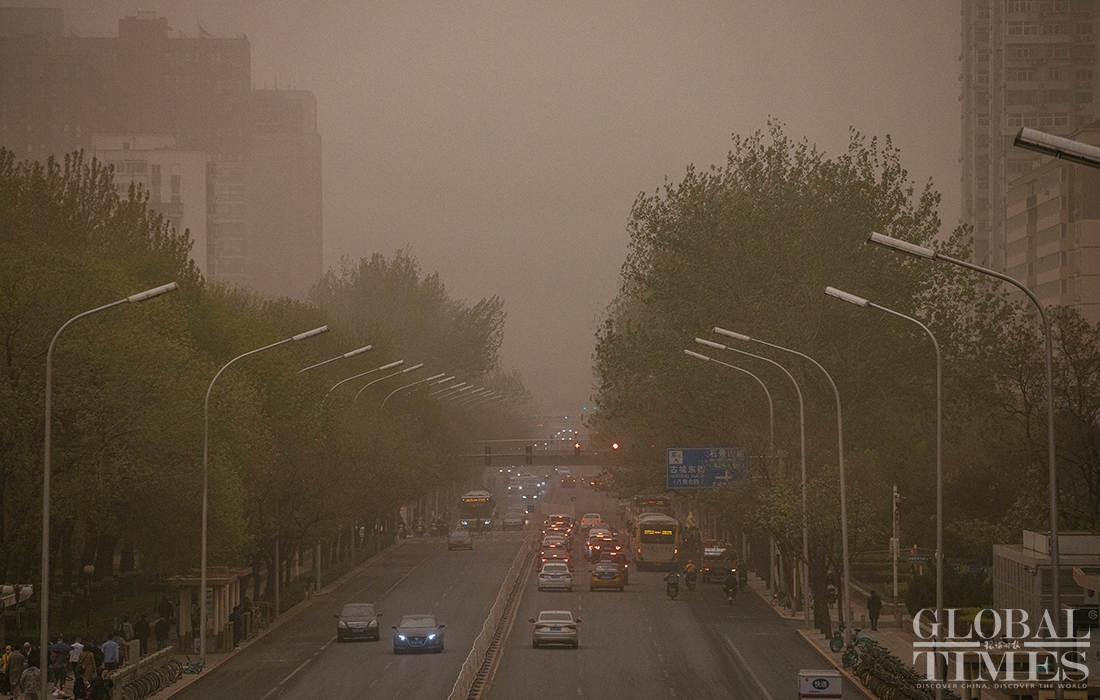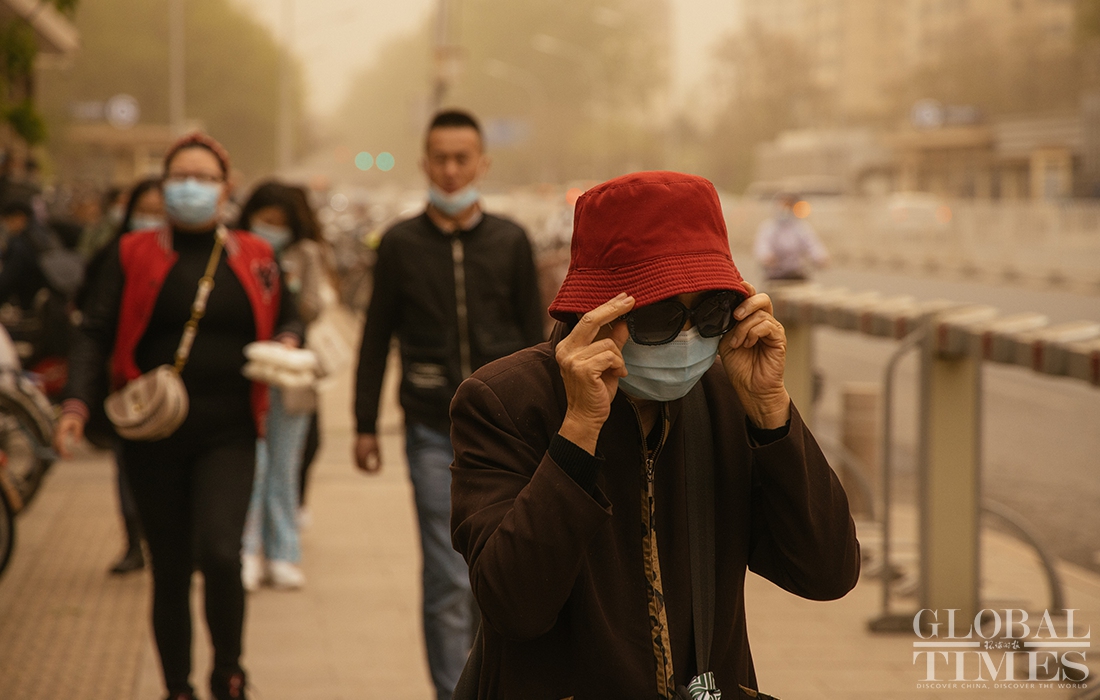
Photo: Li Hao/GT
An expert team sent by China's forestry and meteorological authorities has arrived in the deserts of the Inner Mongolia Autonomous Region for field research on the contributing factors for this year's frequent sandstorms and dusty weather across northern China, as Beijing was enveloped by this year's third round of sandstorms on Thursday.
The city was engulfed in dust and strong gales on Thursday afternoon, with muddy rain falling and thunder rolling in some parts of the capital.
China meteorological authorities issued a dust storm warning for Thursday and Friday as large areas of sand, rain and snow are predicted to hit northern parts of China.

Photo: Li Hao/GT
Multiple areas in Inner Mongolia were engulfed by sand in the morning with a maximum wind force of magnitude 9, reducing visibility to less than 300 meters. Beijing residents were alerted about travel safety and those who had to be outside struggled with the dusty winds and falling mud.
The sandstorm was brought by a third Mongolian cyclone of the year, according to weather forecast. China was hit by
the largest sandstorm in a decade on March 15, followed by
a second one on March 28.
A joint group of experts from China's National Forestry and Grassland Administration (NFGA) and China Meteorological Administration has arrived in the Alxa League and Xilingol League in Inner Mongolia to conduct field research, said a report from NFGA on Thursday.
Zhang Mingying, a Beijing-based meteorologist who used to work for Beijing meteorological bureau, told the Global Times on Thursday that the field research might be done mostly in Badain Jaran Desert and Tengger Desert, the two deserts in Alxa that have a great impact on the weather in Northwest and North China.

Photo: Li Hao/GT
He noted that the experts' trip seek to acquire more comprehensive and detailed knowledge of the sandstorm through a first-hand research from both forestry and meteorological perspectives.
"Sandstorms are happening more frequently this year compared with the past years. The expert group will have a better understanding of why on earth this happened through the field research to see if it is caused by the source region of dust or other factors that affect the sandstorm weather," he said.
Beijing has suggested that schools and after-school educational institutions should stop outdoor activities. Activities such as physical education classes, sports events and other social practice have been suspended, for the safety concerns in the sandstorm weather.
The NFGA previously said that the reason why sandstorms now frequently hit Beijing and sweep across parts of China is that a continuous dry climate in Mongolia and northwestern China tends to loosen the soil. This forms sand and dust, which easily follows the development of air convection and the exchange of air flows.






